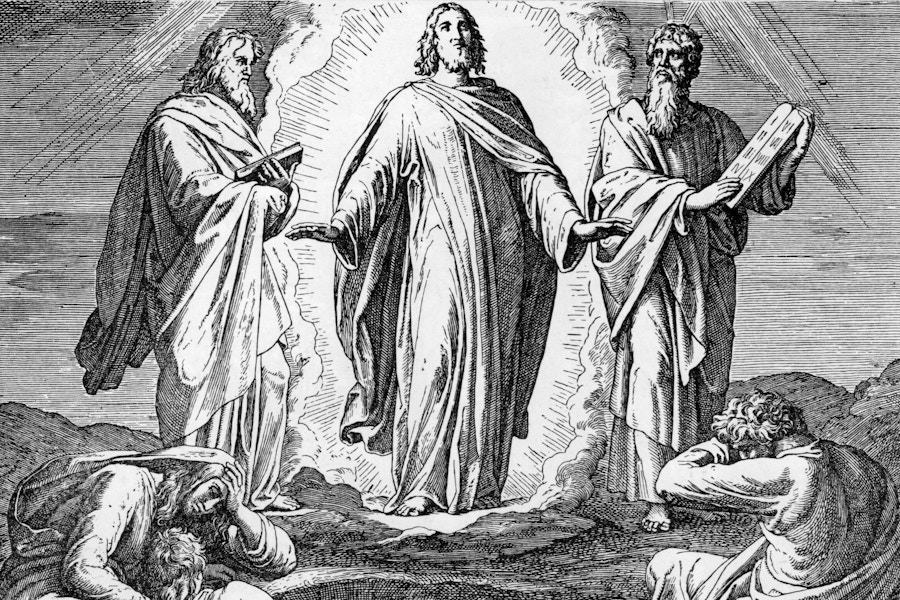 Excerpt from Pauses for Lent
Excerpt from Pauses for Lent
Six days later, Jesus took with him Peter and James and John, and led them up a high mountain apart, by themselves. And he was transfigured before them, and his clothes became dazzling white, such as no one on earth could bleach them. And there appeared to them Elijah with Moses, who were talking with Jesus. Then Peter said to Jesus, “Rabbi, it is good for us to be here; let us make three dwellings, one for you, one for Moses, and one for Elijah.” He did not know what to say, for they were terrified. Then a cloud overshadowed them, and from the cloud there came a voice, “This is my Son, the Beloved; listen to him!” Suddenly when they looked around, they saw no one with them any more, but only Jesus.
As they were coming down the mountain, he ordered them to tell no one about what they had seen, until after the Son of Man had risen from the dead. So they kept the matter to themselves, questioning what this rising from the dead could mean.
—Mark 9:2 – 10 NRSV
The details of the Transfiguration are both straightforward and staggering. Jesus and three disciples go up a mountain to pray. As Jesus prays, his appearance changes. He becomes visibly radiant as if the light of heaven shone out of him. Then two ancient biblical figures, Moses and Elijah, appear and talk with him. Finally a cloud covers them, and the disciples became frightened. A voice comes out of the cloud and says, “This is my Son, the Beloved; listen to him!” (v. 7). Then suddenly, the disciples find themselves alone with Jesus again.
This experience stresses two essential truths for our journey in the kingdom of God. First, as Christ-followers we need mountaintop experiences to keep our discipleship fresh, vital, and alive. The eternal realm, the hidden dimension of God’s transforming presence, penetrates our earthly reality and is always available to us. We need to regularly open ourselves to this divine reality so that our lives also glow with God’s presence and power. If we have never experienced an encounter like this, we may want to reexamine those spiritual practices of solitude, prayer, and worship that open our lives to them.
Second, the Transfiguration reminds us that mountaintop experiences are not ends in and of themselves. Their importance lies in where they lead us. Immediately after Jesus is transfigured, he comes down from the mountaintop into the valley of human need and suffering. He brings healing to a child suffering from seizures. In that moment he translates his spiritual experience into compassionate action. For Jesus, coming down from the mountain is as important as going up the mountain.
Let us take time to ponder this truth. As followers of Jesus, we are invited to bring the light of our mountaintop experiences into the darkness of our pain-filled world. Sometimes we don’t want to look at the pain and misery around us — at home, at work, among our neighbors and friends. After all, we live in a culture that works to avoid or ignore others’ suffering. But we need to be sharply countercultural. Rather than avoiding them, we need to intentionally engage those who suffer. We can make new beginnings this Lent by connecting with those who are hurting and by offering them the healing beam of God’s presence.
Hudson, Trevor. Pauses for Lent: 40 Words for 40 Days. Upper Room Books. Kindle Edition. Used with permission.
Text First Published January 2015


